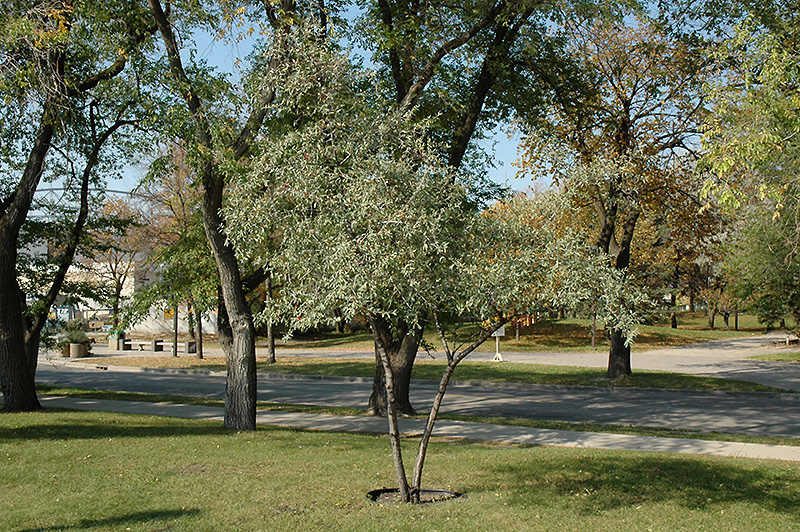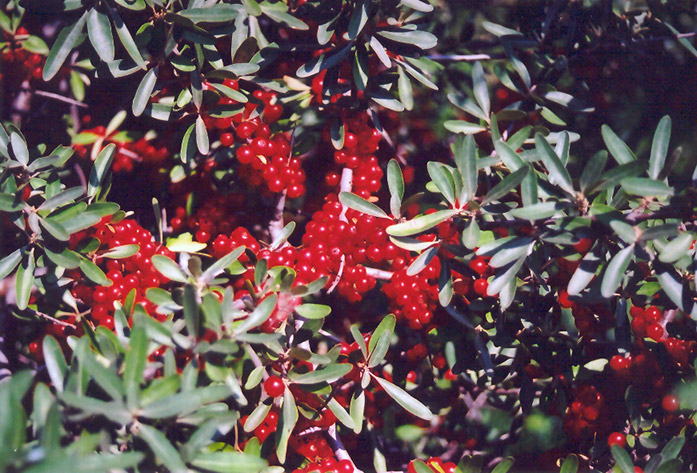PLANT FINDER
Height: 8 feet
Spread: 8 feet
Sunlight:
![]()
Hardiness Zone: 2a
Other Names: Buffaloberry
Description:
A real tough customer that will grow in the coldest and driest regions; features showy silver leaves all season long and small fragrant yellow flowers followed by bright red berries; somewhat shrubby habit, suckers, but ideal for poor alkaline soils
Ornamental Features
Silver Buffaloberry has attractive silver deciduous foliage on a plant with a round habit of growth. The fuzzy narrow leaves are highly ornamental but do not develop any appreciable fall color. It features subtle fragrant lemon yellow flowers along the branches in early spring. It produces red berries from late summer to early fall. The smooth brown bark and silver branches are extremely showy and add significant winter interest.
Landscape Attributes
Silver Buffaloberry is a multi-stemmed deciduous shrub with a more or less rounded form. Its relatively fine texture sets it apart from other landscape plants with less refined foliage.
This shrub will require occasional maintenance and upkeep, and is best pruned in late winter once the threat of extreme cold has passed. Gardeners should be aware of the following characteristic(s) that may warrant special consideration;
- Suckering
- Spiny
Silver Buffaloberry is recommended for the following landscape applications;
- General Garden Use
- Naturalizing And Woodland Gardens
Planting & Growing
Silver Buffaloberry will grow to be about 8 feet tall at maturity, with a spread of 8 feet. It tends to be a little leggy, with a typical clearance of 1 foot from the ground, and is suitable for planting under power lines. It grows at a medium rate, and under ideal conditions can be expected to live for approximately 25 years.
This shrub should only be grown in full sunlight. It prefers dry to average moisture levels with very well-drained soil, and will often die in standing water. It is considered to be drought-tolerant, and thus makes an ideal choice for xeriscaping or the moisture-conserving landscape. It is not particular as to soil type, but has a definite preference for alkaline soils, and is able to handle environmental salt. It is highly tolerant of urban pollution and will even thrive in inner city environments. This species is native to parts of North America.



